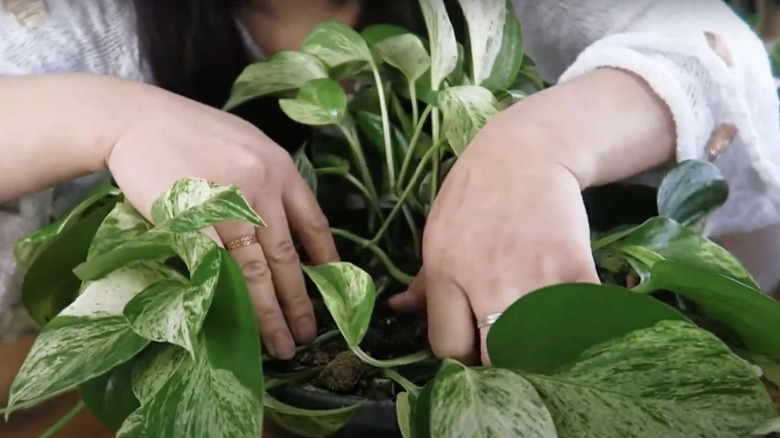Transform The Way You Grow Vining Plants With The Help Of A Simple Bobby Pin
We may receive a commission on purchases made from links.
There are common goals that many plant parents aim for: dramatic fenestrations on monsteras, flowering hoyas, and full vines. After all, plant influencers on social media make these goals look effortless. But without the right growing conditions — light, soil, water, fertilizer, humidity — it's hard for a plant to reach its full potential. Thankfully, one of those goals is achievable with a simple hack that requires only a bobby pin. So dig down deep in your bathroom drawers for this helpful stash and let's go!
If you have a vining houseplant that has just a few leggy strands, use a bobby pin to grow new leaves from the plant's nodes — the joint or nub where leaves, buds, and roots form. Let's first look at how this works. When propagating a pothos, philodendron, or similar vining plant, a commonly used method involves snipping a vine between two nodes and starting a new plant from that. The stem cutting is then placed in soil or in water until roots emerge from the node.
You can also use a technique called simple layering. Instead of taking a cutting, simply lay the stem of the plant horizontally with a node touching the surface of the soil. A root will then grow directly into the soil from the nub to begin a new plant that can eventually be separated from the parent plant. So using a bobby pin to secure a vine onto potting media — without first cutting it from the parent — will promote new growth that will create a bushier plant.
Steps toward a fuller vining plant
Among popular houseplants, simple layering can be done with pothos (Epipremnun aureum), wax plant (Hoya carnosa), heartleaf philodendron (Philodendron hederaceum), arrowhead vine (Syngonium podophyllum), and swiss cheese plant (Monstera deliciosa), among others. This technique also can be used to propagate viburnum, lavender, and other non-vining plants. Although traditional narrow bobby pins, like what @ThatFoliageLife uses, will do the trick, pins like these MAORULU u-shaped hair pins are easier to work with. Their wider shape allows more space for the stem, lowering your chance of squeezing or accidentally breaking the vine. If you don't have hair pins, floral pins or a partially unfolded paper clip also could work.
First, identify the barest sections of the soil, and drape or wind a vine horizontally over the surface. Only do this if your vining plant is flexible enough to bend without breaking. However, if the stem snaps off, don't worry. You can turn the accidental plant cutting into a new plant. Secure the stem with a pin, making sure that the node is touching — if not buried in — the soil. If the node does not make contact with the soil, a new root may not grow. Make sure to not cover any leaves when burying the stem. A longer vine can be wound throughout the surface of the soil, with nodes being pinned down in numerous areas. You also could partially cut the stem halfway (being careful not to completely sever it), and apply rooting hormone to promote faster growth before burying the vine.

